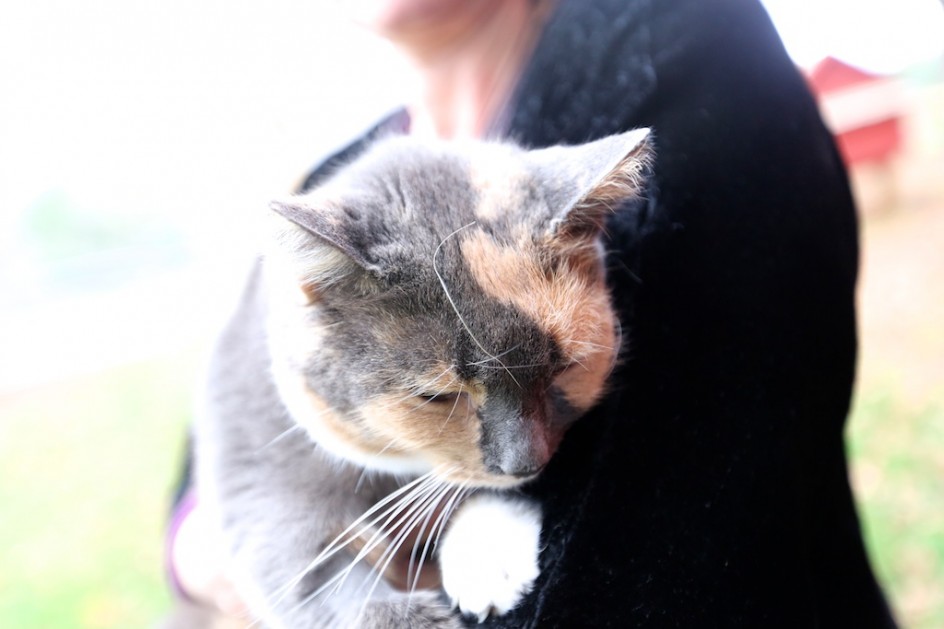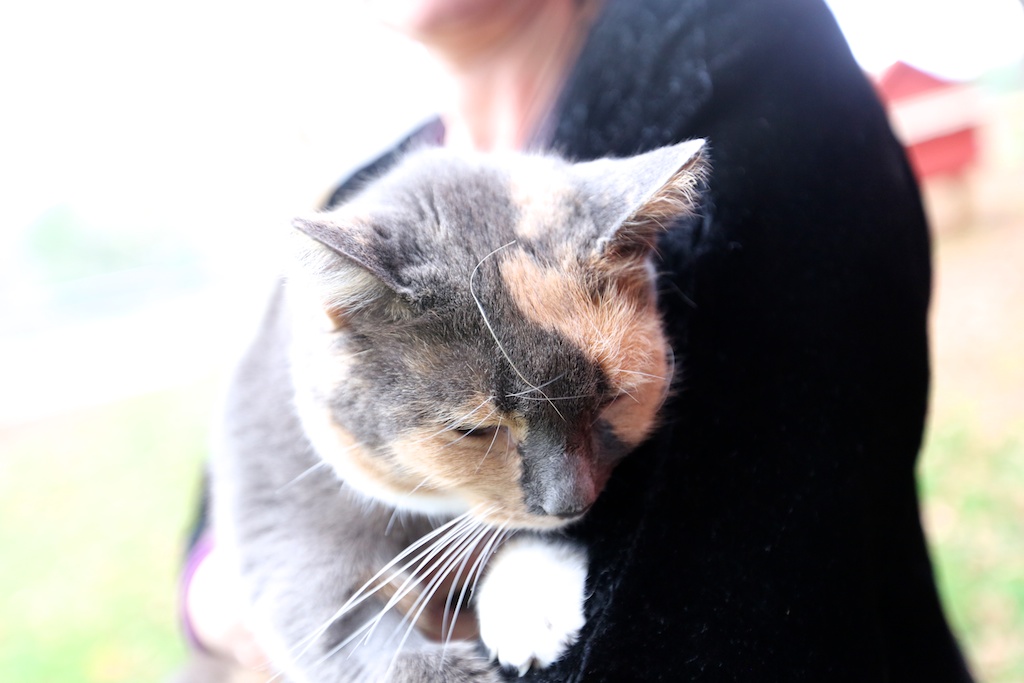
Does Minnie have phantom pain in her amputated leg? Tuesday, she took off outside, climbed her wall, navigated through the barn. The last two days have been very different, worrisome to me, Minnie has barely moved. She has eaten but struggled to walk and we have taken her out for very short periods, she does not want to move much, she seems, in some ways, to be deteriorating.
Minnie’s symptoms are in keeping with an animal in pain – she has hunkered down and gathered herself – and many people have asked me if I think Minnie might be suffering from phantom pain. For those who do not know, phantom pain are sensations described as perceptions that an individual experiences relating to a limb or an organ that is no longer part of their body. The term was coined by an American neurologist named Silas Weir Mitchell in 1871. Studying and treating injured Civil War veterans, Mitchell repored that “thousands of limbs were haunting as many good soldiers, every now and then tormenting them.” Other doctors also reported that many patients, long after the amputation is made, many say they still feel pain – sometimes great – in the amputated limb.
This phenomena – feeling pain in legs and arms that are no longer present – is widely reported among returning war veterans.
Neurologists have studied phantom pain for more than a century but are still not certain what causes it or how to treat it, although doctors are certain the pain is very real. Increasingly, doctors are treating it therapeutically rather than will medicine – it seems the brain does not know the limb is gone and continues to transmit powerful feelings through the limb.
When Minnie had her surgery, one of the vets from the Cambridge Valley Veterinary Service called me and asked if I was comfortable with her prescribing pain killers for phantom pain for one month after the surgery. The vet staff was divided – this was a recommendation only, not a prescription that was part of the protocol for amputation surgery. I agreed to pay for the medication, but I was also anxious to get Minnie off of pain killers as soon as possible – they were causing severe digestive trouble and sluggishness, and keeping her from moving around and learning how to use her leg.
The vet said it wasn’t clear if the phantom pain killer was necessary, but we are considering giving it to Minnie now. There is no question phantom pain exists in humans, veterinary doctors are very divided about whether it occurs in animals or whether it ought to be treated separately. I also seems inevitable to me that Minnie would still be very sore and uncomfortable from a major surgery that is just more than two weeks old. I called a prominent researcher at Tufts Veterinary School who has worked with me on my books and he said “the truth is we just don’t know if animals have phantom pain, they can’t tell us and there is no way to be certain, other than to look for the usual symptoms of pain – sleeping, in cats blinking and twitching, obvious discomfort and listlessness.” I am uncomfortable giving barn cats pain killers for any length of time, they will just slow her and her healing down further, Maria and I will have to think about it.
Most farmers would never pay $1,700 for a barn cat amputation, nor would they dream of paying for phantom painkillers, but I am not a farmer and Minnie lives on the boundary between a pet and a farm animal, something many people with pets simply do not understand. I do not regret keeping Minnie alive and treating her leg, but I do feel I am being pushed towards decisions that will transform Minnie into a pet and a house cat, something I did not want to do and would have taken into account had I known of it earlier.
Despite all of the discomfort many of you have with my feelings about it, it is still my wish – and Maria’s – that Minnie return to her life as a barn cat, many people think I am naive for thinking that is feasible, but I haven’t given up on it. Lots of people tell me that animals make their own decisions – when to die, who to adopt, when to come inside. I think those are people decisions, my responsibility, not theirs, and this may, in fact, be naive and unrealistic, we’ll see. It is so easy to lose control of decisions involving animals and medicine.
The truth is I can’t know if Minnie is suffering from phantom pain, no one can, I just have to talk to Maria about it and make the best judgement that we can.
I do not want Minnie to be in pain, so yet another decision to make in this interesting saga of a barn cat and her journey.

